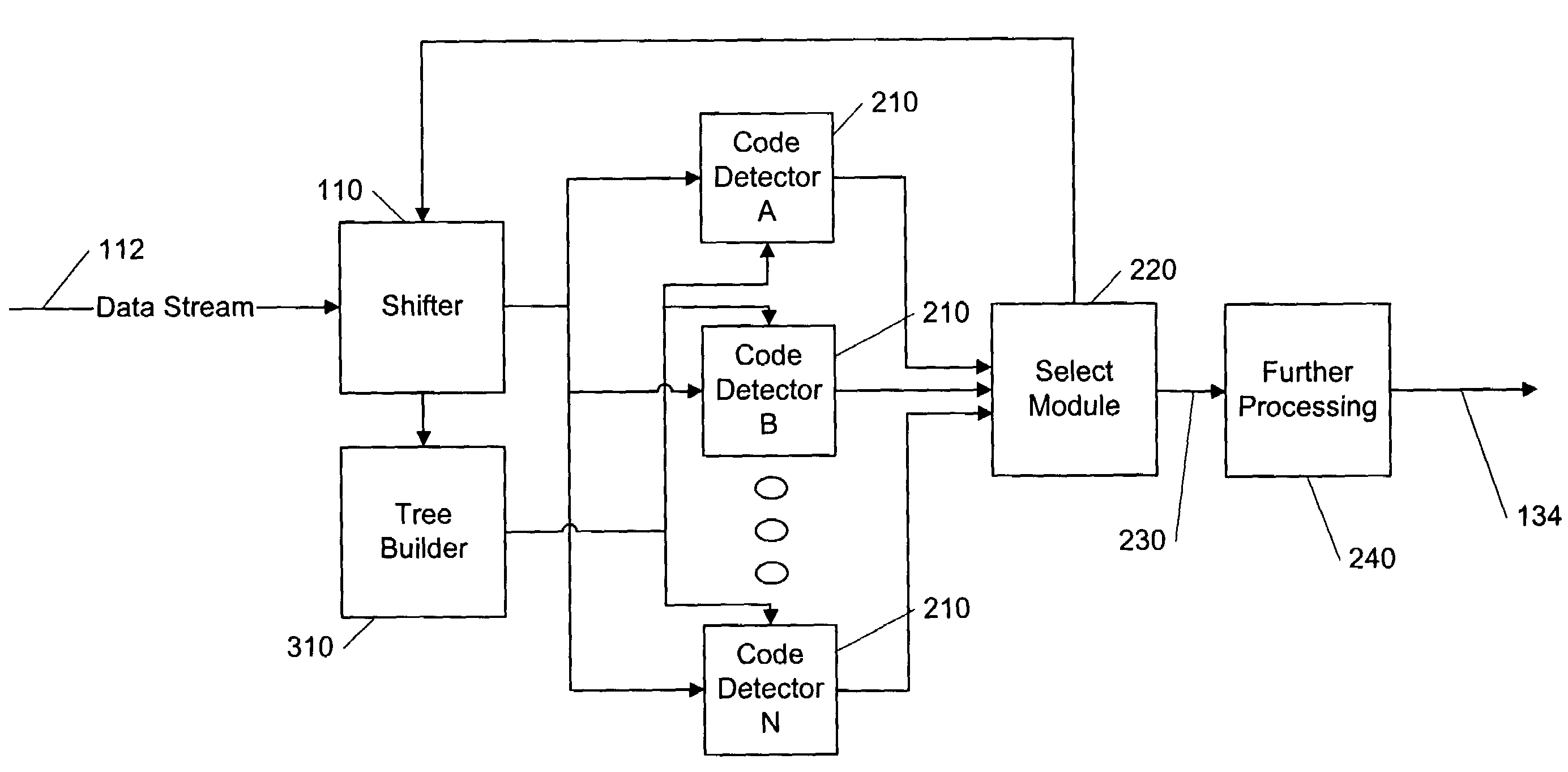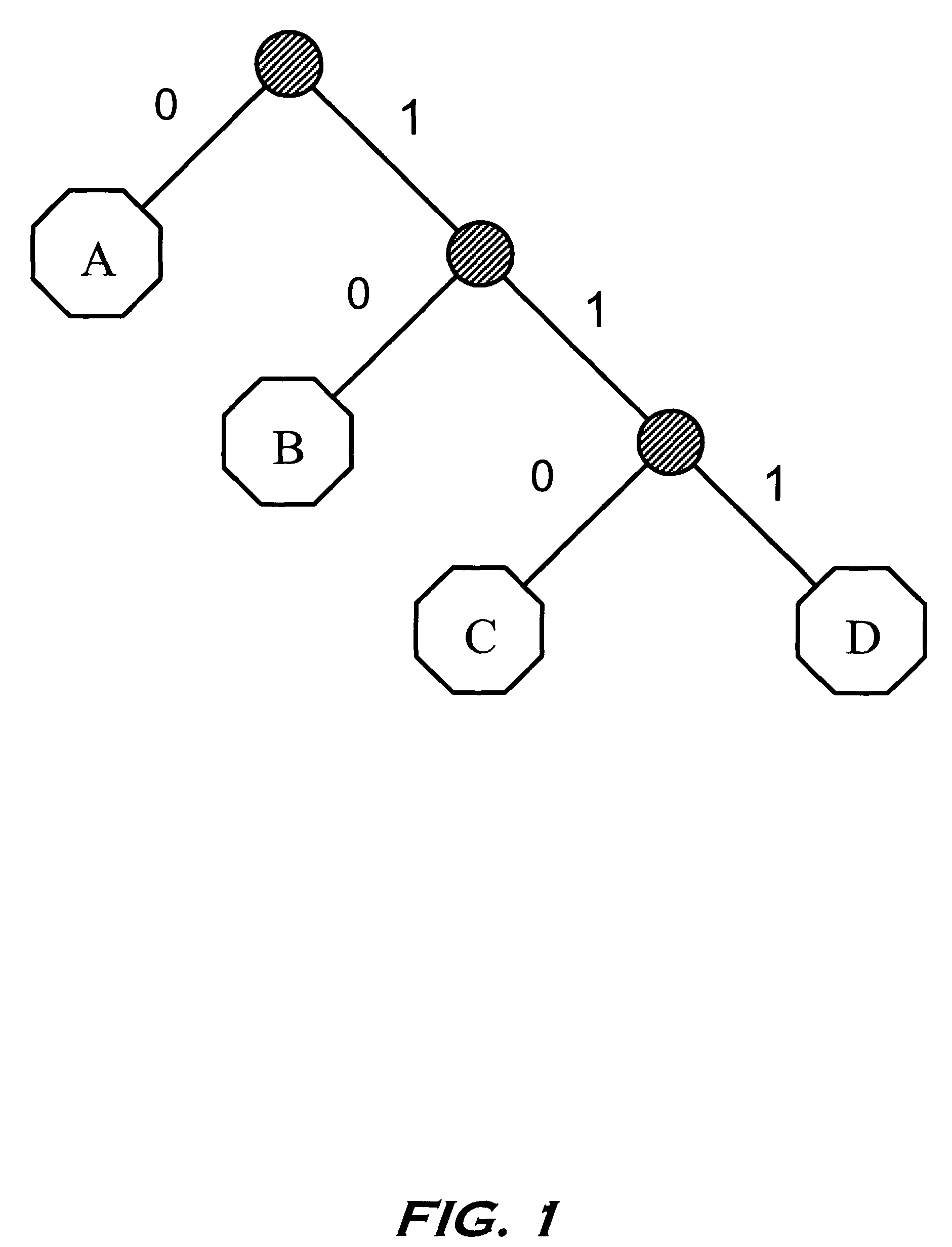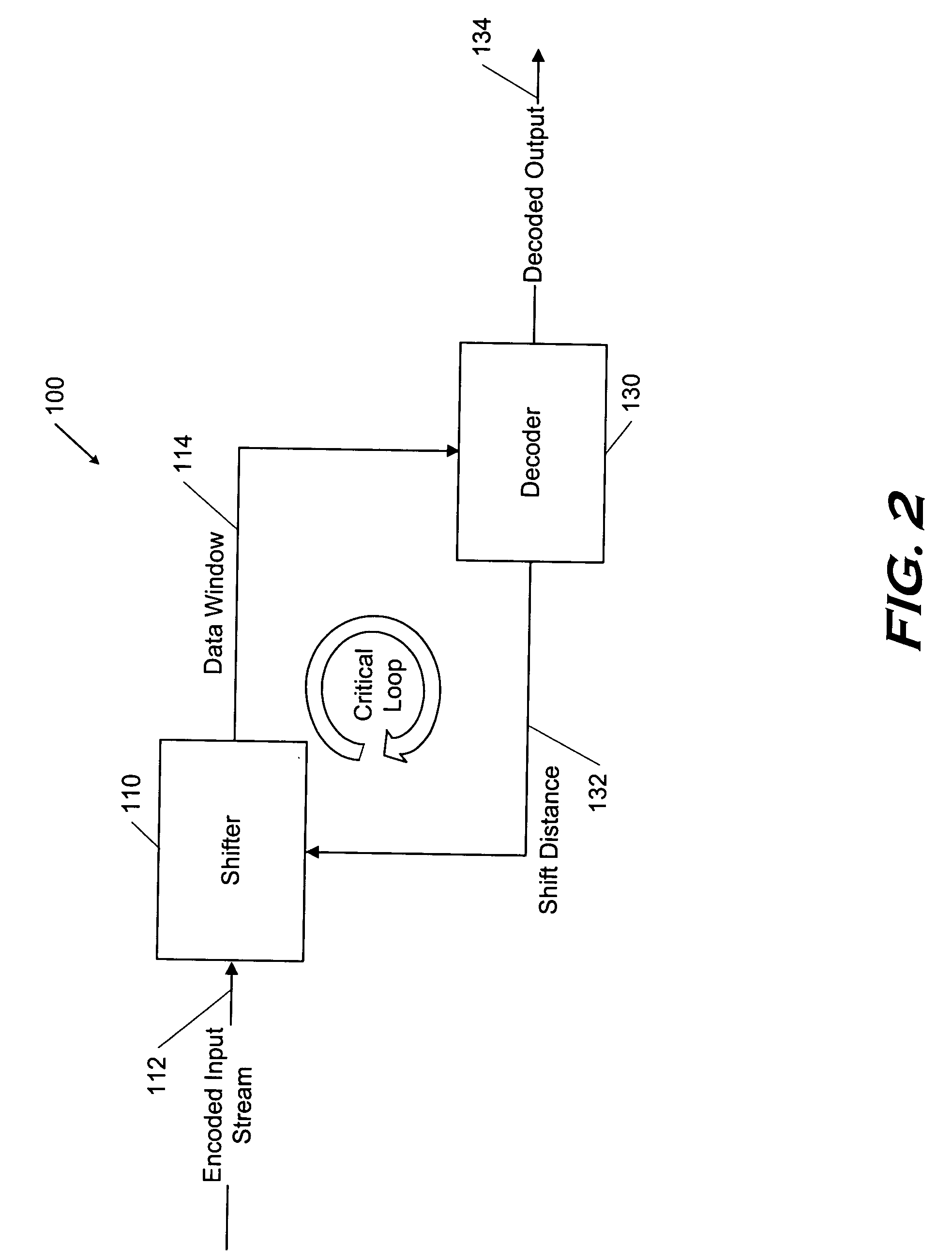Parallelized dynamic Huffman decoder
a dynamic huffman decoder and parallel technology, applied in the field of decoding variablelength codes, can solve the problems of consuming valuable time, consuming ram resources, and huffman trees from storage devices to decoder memory often take considerable time, so as to achieve faster lookups, save ram resources, and reduce the effect of huffman trees
- Summary
- Abstract
- Description
- Claims
- Application Information
AI Technical Summary
Benefits of technology
Problems solved by technology
Method used
Image
Examples
Embodiment Construction
[0057]Embodiments of the invention will now be described with reference to the accompanying Figures, wherein like numerals refer to like elements throughout. The terminology used in the description presented herein is not intended to be interpreted in any limited or restrictive manner, simply because it is being utilized in conjunction with a detailed description of certain specific embodiments of the invention. Furthermore, embodiments of the invention may include several novel features, no single one of which is solely responsible for its desirable attributes or which is essential to practicing the inventions herein described.
[0058]FIG. 2 is a top level block diagram illustrating the components of a system for decoding a data stream. As illustrated in FIG. 2, the system 100 includes a shifter 110 and a decoder 130,
[0059]The shifter 110 receives a stream 112 of Huffman-encoded input data. The encoded input stream 112 may be a sequence of bytes, or a sequence of 32-bit words, for ex...
PUM
 Login to View More
Login to View More Abstract
Description
Claims
Application Information
 Login to View More
Login to View More - R&D
- Intellectual Property
- Life Sciences
- Materials
- Tech Scout
- Unparalleled Data Quality
- Higher Quality Content
- 60% Fewer Hallucinations
Browse by: Latest US Patents, China's latest patents, Technical Efficacy Thesaurus, Application Domain, Technology Topic, Popular Technical Reports.
© 2025 PatSnap. All rights reserved.Legal|Privacy policy|Modern Slavery Act Transparency Statement|Sitemap|About US| Contact US: help@patsnap.com



